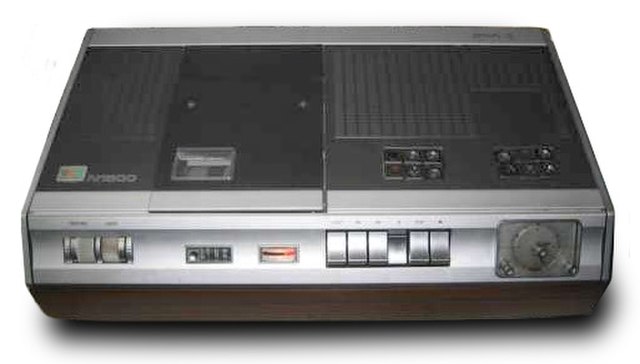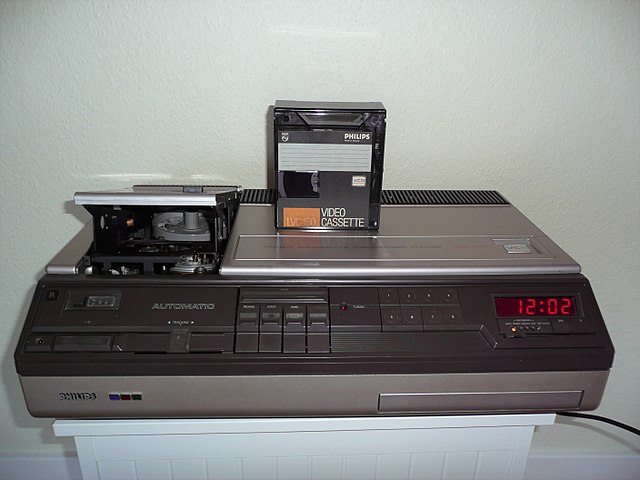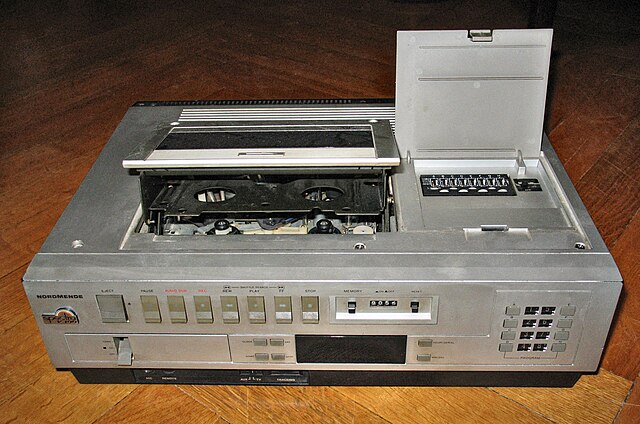Video Cassette Recording (VCR) is an early domestic analog recording format designed by Philips. It was the first successful consumer-level home videocassette recorder (VCR) system. Later variants included the VCR-LP and Super Video (SVR) formats.
An N1500 video recorder, with wooden cabinet.
VCR-format video cassettes with one inside a case (left) and the other on its own (right). A CD is shown for scale.
Philips N1702. A VCR-LP recorder.
The rare Grundig SVR4004 machine.
A videocassette recorder (VCR) or video recorder is an electromechanical device that records analog audio and analog video from broadcast television or other AV sources and can play back the recording after rewinding. The use of a VCR to record a television program to play back at a more convenient time is commonly referred to as time shifting. VCRs can also play back prerecorded tapes, which were widely available for purchase and rental starting in the 80s and 90s, most popularly in the VHS videocassette format. Blank tapes were sold to make recordings.
A typical late-model Philips Magnavox, VHS format VCR
Not all video tape recorders use a cassette to contain the videotape. Early models of consumer video tape recorders (VTRs), and most professional broadcast analog videotape machines (e.g. 1-inch Type C) use reel to reel tape spools.
Top-loading cassette mechanisms (such as the one on this VHS model) were common on early domestic VCRs.
Philips N1500 video recorder from the early 1970s







